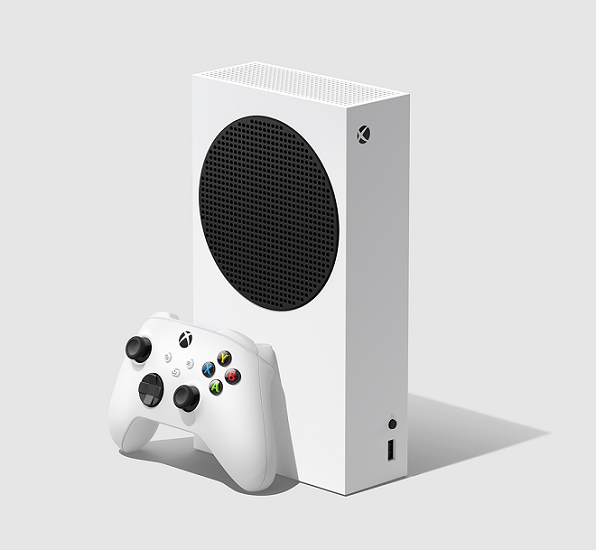Apple formally begins their biggest change yet
November isn’t done with regime changes just yet.
In a video presentation today, Apple made good on it’s threat back in June to transition the Mac lineup from Intel chips to beefier versions of their own processors used in the iPad and iPhone lineups.
Of the seven macs currently making Apple’s lineup, three were reborn today. The Mac Mini, the MacBook Air and the 13” MacBookPro have all had the insides rebuilt for Apple Silicon which now has a specific name: The M1 processor.
(Yes, seven — not eight. The iMac Pro seems to have been quietly end-of-life’d, as it did not appear in the “full” product lineup image Apple used repeatedly in their presentation)
These three models were not chosen by accident or coincidence; they are the only three models for which discrete graphics was not an option, so they were the models for which the on-board graphics of Apple’s new M1 system-on-a-chip (we’ll get into more details of it in just a bit) were going to provide the greatest upgrade. It may also indicate that Apple needs more time to scale graphics performance for the rest of the lineup (hence, the oft-mentioned “couple of years” timeline for an update that is starting at 3/7 complete). Of course, retooling assembly lines and parts manufacturing also takes time.
I would have preferred a major case design update of change to the name badge to allow the Apple silicon products to be immediately distinguishable from their Intel predecessors, but perhaps something had to give with COVID disrupting everyone’s workflow this year. The rumor mill has also been reporting for months that the new iMacs will be arriving later then they could be due to exactly this kind of new design.
While the previous Intel iterations of the Mac Mini and the 13” MacBook Pro remain for sale alongside their replacements, the Intel MacBook Air received a proper killing and is only available refurbished. The M1 Macs have their starting prices $100 lower then their predecessors, except for the 13” MacBook Pro which is selling for the same price.
These new Macs will be shipping out next week, and the OS update to support them, Mac OS 11 “Big Sur” after nearly 20 years of Mac OS X, comes out on Thursday.
More integration, less choice
While the pundits expected a A14 derivative with some random string of letters attached, we got the more elegant name of M1. The jury is out on if the M1 still shares architecture with the A14 series anyway, but it may just as easily have been built from the ground up sharing little more than a design philosophy.
As a system on a chip similar to those of Apple’s mobile devices, though, what little customization that was afforded a shopper of Macs has shrunk even more. The most obvious of these changes is the standard practice of integrating the system RAM into the SoC. While this does give the fastest possible access to the RAM shared by both the CPU and the GPU, it’s even more impossible to upgrade as when Apple was soldering it to the motherboard.
Each and every iteration of the M1 processor listed in the store with exactly 8GB of RAM, with 16GB versions available at a $200 premium. While an iPad Pro seems to chug along just fine with 3GB, I am concerned that even with the efficiency gains, 8GB might show its age too quickly in the coming years.
Aside from the RAM, there’s only one other built-to-order customization available: storage upgrades. For a mere $200 extra, you can double the straightjacket-like starting storage of 256GB to 512GB. It’s a $250 upgrade for the MacBook Air, because it also moves you from a binned SoC with 7 GPU cores to a fully-functional 8-core GPU.
Those are what’s left of the traditional “Good/Better/Best” starting options. Once you make you pick, you can boost your internal storage to 1TB for an extra $200 or 2TB for $600. Just to backtrack here, the difference between 256GB and 2TB is a total of $800.
This, of course, brings an end to being able to customize a Mac with a processor that has more cores or a higher clock speed. If there are differences in power between the otherwise identically spec’d M1’s between the 256GB and 512GB offerings in the store, Apple’s not telling. Though I would assume not.
This leads me to another consequence of the new design: It helps Apple obfuscate some key details that were plain to see when it used third-party hardware.
Much like the store listings and marketing for the iPhones and iPads before it, Apple is no longer using processor speed as a listed feature of the M1 Macs. It lists core count, and differentiates versions of the same model by how many of the GPU cores are enabled, but that’s about it.
As such, it’s not immediately clear as to how the three new Macs are delivering different performance levels. Is it simply providing more watts to the processor, binned components or are there sub-breeds of the M1? We’ll have to wait for deep dive reviews to come out to know for sure what’s going on, because Apple is only giving relative performance comparisons.
So, apart from the M1.
While the architecture change was certainly front and center in the product announcement, these computers are much more than just a chip. There are a few other features that differentiate theme new Macs from their Intel counterparts still on the market (thought to be fair, anybody buying a new Mac right now is almost certainly going to base their decision on whether they need to future-proof or past-proof).
The Facetime cameras are still 720p models in both laptops. After all that hype about making machines better for the use case of working from home, I expected Apple taking on the trivial expense of upgrading these to full HD was coming. While there’s some new, iPhone-like software enhancements going on to the video, the camera itself will not be a differentiator between the new hotness and the old and busted models.
One thing that will be different is the Mac Mini and 13” MacBook Pro will now be able to drive 6K external monitors, something that was beyond their power before. It’s yet another example of a conspicuous graphics improvement from the models that had the most to gain.
A less conspicuous change in graphics is lack of compatibility for external GPUs over thunderbolt, with the Apple store noticeably only listing Apple’s favorite Blackmagic eGPU solutions as compatible with Intel Macs. Perhaps this may also indicate an end in general to discrete graphics throughout the lineup, and one of the challenges in producing SoCs at the top end of Apple’s lineup?
Networking will also get a bump with all the new Macs being Apple’s first to support Wi-Fi 6 (802.11ax for those more used to the classic versioning system). I was waiting for this one, considering it was already present in last year’s iPhones and iPads.
As you might expect from the touted efficiency gains of Apple’s chips over Intels, the battery life for both of the MacBooks shot up noticeably into nearly actual all-day (waking hours) territory.
Apple did not upgrade to Thunderbolt 4 on their new Macs (perhaps because Intel’s requirement of using it’s VT-d direct memory access protection for TB4 certification which is a touch harder to accomplish without an Intel processor and chipset. They do, however, fully support USB 4.
But is it buyable?
While the models that would be in my market segment (16” MacBook Pro or a nonexistent middle ground between the iMac and the Mac Pro) weren’t part of the launch, I can still offer what’s quickly becoming my usual advice about pulling the trigger on first-gen hardware.
Frist, you also have to have due caution after the Jekyll-and-Hyde nature of the iPhone 12 launch. Future-proof 5g modem… that chugs battery (you might say that 5G is 20% faster). A new magnetic accessory system building off of the Qi charging mechanism… that connects so weakly you have to baby said accessories for fear of dropping your ID and credit cards just trying to use your pocket. To cut to the chase, everything new about the iPhone 12 seems like it wasn’t ready for prime time and Apple uncharacteristically (in all things but keyboards) decided to just rush these features to market instead of letting them bake longer for the iPhone 13.
So taking everything like that about these new Macs and then add in the complete architecture changeover? We’re in full-on Game Launch Rock territory. Early adopters who live for Wild West bleeding edges have a glorious new adventure ahead of them, but for the rest of us? As Three Dead Trolls in a Baggie once sang, “Well I have a girlfriend and things to get done.” (Also still just as true today is the line, “They’ll charge you for the beta and they’ll charge you again.”)
On the previous architecture change-over, I was served very well by waiting until the second editions of the Intel macs, and was rewarded for my patience with being able to get a Core 2 Duo machine, which was not only quite the leap above the original Core 2 release, but also MUCH longer supported on the OS side by virtue of the Duo being 64-bit. I got lucky then, as nobody had a clue at the time that Apple was already embarking on their mission to kill support for 32-bit hardware.
Chances are there’s at least one piece of dead weight architecture kicking around the M1 chips that will prove limiting down the road as Macs on Apple Silicon become more robust. Not to mention all the usual and customary growing pains for something like this. There’s probably a few kinks that will be long since worked out by the time Apple gets the entire Mac product line on the new chips, and that work will pay much larger dividends than you’d get from your typical annual hardware refresh.
Besides, my workflows still rely on some 32-bit applications and Windows-only applications, both of which Rosetta 2 doesn’t do. Until such time as I can emulate Mac OS X.13 “High Sierra” and Windows on Apple’s new hardware, I’d have to reinvent too many wheels for it to be worth the bother. Still, I’ll need to move on in one way or another, given that my ability to keep a hackintosh up-to-date is now on borrowed time.




